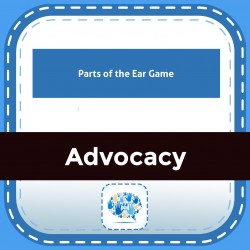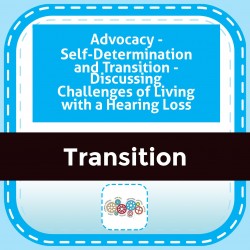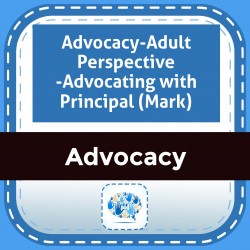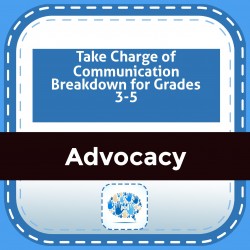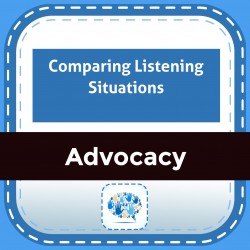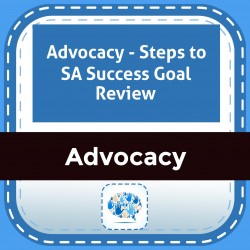Ability Levels
Categories
Resource Types
Age/Grade Range
CCSS
Anchor Standard
Speaking & Listening
Language
Reading
Advocacy in Action Curriculum Lower Elementary
$ 7
Complete curriculum guidance and scenarios for instruction in amplification (including hearing aids, cochlear implants, and FM systems), listening environments, and social awareness situations.
Preferential Seating to Overcome Distance and Noise
$ 195
Teach students how to select the best seat for optimal listening and looking in the classroom. Includes diagrams for problem-solving noise sources and seating.
Parts of the Ear Game
$ 5
This is a fun digital learning activity for a student to review the 3 parts of the ear. The learner identifies the function of each part, what is in each part and uses a diagram to identify parts of t
...
he ear.There are very few digital learning activities available today. Advocacy practice for students with hearing loss includes learning about hearing. As students begin to learn how they ear, identifying the 3 parts of the ear is a first step. They need lots of practice labeling different parts of the ear and identifying how they help with hearing. Learning Objective:1. The student will be able to identify functions of the 3 parts of the ear. 2. Given a diagram, the student will label the part of the ear.
Advocacy - Self-Determination and Transition - Discussing Challenges of Living with a Hearing Loss
$ 195
Students need to know and be able to discuss the facts and labels around their hearing. In this activity students transfer information from their most recent audiogram onto a graph that illustrates b
...
oth hearing levels and speech sounds. Encourage discussion of students' challenges associated with having a hearing difference.
Advocacy-Adult Perspective -Advocating with Principal (Mark)
$ 0
Expose older students to how self-advocacy skills different from school to adult life. Students are given an article written by an adult with hearing loss. Encourage discussion and forward-thinking wi
...
th this activity. See BUNDLE at S0XSCI729.
Take Charge of Communication Breakdown for Grades 3-5
$ 8
A ten-page comic-style book (in color & grayscale) defines communication and communication breakdown. Examples are shown as interactions between two boys: Luke and Ricardo. A teacher acts as narrator
...
and discusses three tools for repairing communication breakdown: signaling the breakdown, asking for repetition and repeating what was heard. The boys use each tool in responding to a single CBd event. A glossary is provided at the end of the book. Materials also include a graphic organizer, 8 discussion-starter cards, 6 review cards and 5 comprehension questions for assessment. Teacher notes explain how the lesson materials can be used in face-to-face lesson or on a digital platform.
Comparing Listening Situations
$ 5
This interactive Google Slides activity asks students to evaluate 4 listening situations (presented in pictures and short descriptions) and rate them on a scale according to listening difficulty. Afte
...
r rating the situations, students are tasked with providing an explanation of why each situation is difficult or easy to hear. This would be a great 'stepping off' activity to begin a unit on coping skills or to evaluate how a student perceives different situations and why/how he/she feels about his/her listening abilities.There is very little digital learning activities available for remote learning today. This tool that asks students to rate situations that are difficult or easy to hear encourages introspection about a student's hearing loss. Asking student to explain why the situation is easy or hard to hear encourages them to evaluate their own listening skills and how advocacy can improve even the most difficult situation.Learning Objective:The student will be able to compare listening situations by rating them on a scale from easy to hear to hear. The student will be able to describe why a specific listening situation is difficult or easy to hear, giving support for their answers.
Advocacy - Steps to SA Success Goal Review
$ 395
Once specific skills have been taught and practiced with support, topic centered activities are a good way to review previouSZy taught steps and demonstrate mastery over time and in different situatio
...
ns. Advocacy instruction is not a onetime ‘teach and it’s done’ type of lesson. Incorporating advocacy instruction within daily routine and through topics of interest will promote retention and used of learned skills.
 Your browser is out of date. For best experience switch to latest updated Browser.
Your browser is out of date. For best experience switch to latest updated Browser.
 Get Chrome
Get Chrome Get Edge
Get Edge Get Firefox
Get Firefox

